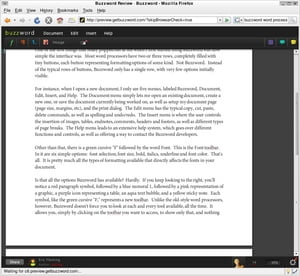Management Buzzwords Explained: Core and Distinctive Competencies
This is the sixteenth in a series of essays that addresses management topics. The first ten explored “hot button” issues; the next ten satirize management “buzzwords.” I base these essays on countless provocative lectures and irreverent discussions as a nutty professor of Business Administration.
What is the source of competitive advantage? What can actual managers actually manage to create and sustain it? These are questions I left open in a previous essay that addressed Competitive Advantage as a management buzzword that really bothers me.
Answering these questions leads to a slew of other buzzwords: tangible resources, intangible resources, core competencies, distinctive competencies, organizational capabilities, and to sum it up, a theory called the Resource-Based View of the Firm. As buzzwords go, they are not that irksome because they are reasonably self-explanatory. What is not self-explanatory is how they fit together into an overall theory of competitive advantage and strategic management.
When business scholars learned that some firms consistently earned higher than average profits, relative to what economics might infer was “normal” for the respective industries, it was assumed that this was not due to luck. Something real and systematic was going on. Whatever the reason might be, was called sustainable competitive advantage. Researchers set about to find its source and understand it for management purposes.
The 1980’s were the heyday of an economics view that posited that establishing an advantage was a matter of properly positioning a firm in its economic/market environment, or in other words, that advantage came from how a firm stood against forces “out there.” A firm’s profitability is to some extent structural, or environmentally determined by the economic forces that shape an industry. The problem that became apparent to scholars over time was, firms within industries differed even more than industries differed from each other. That was a big deal to scholars and academics. It meant that they only had a partial explanation.
That school of thought also became criticized based on a common sense observation. It treated the organization as a “black box,” i.e., the firm itself was not dissected. Well, that can be unrealistic from the management point of view. Environmental forces are real and should be reckoned with, but most managers in most firms in most industries can’t affect them much. What most managers can directly affect is what’s going on inside the firm.
So the “positioning” school fell from grace. Researchers in the 1990s renewed the quest for sustainable competitive advantage by looking inside firms instead of at the environments around them. By around 2000, findings congealed into a theory called the Resource-Based View, or RBV. Just as the positioning school coined terms like competitive advantage, RBV coined terms like core competencies, distinctive competencies, and organizational capabilities. Scholars differ on definitions, so here I’ll offer one set that seems sensible, and that easily translates into everyday business buzzwo – er, I mean, terminology.
If you were to liken academic scholars to archeologists, picture them digging deeper and deeper into what makes businesses fail or succeed, one layer of data after another, looking for the roots of sustainable competitive advantage until the remaining evidence could not be further explained by anything more fundamental. If you can hold on to that metaphor, you can understand why the most popular theory of competitive advantage sounds so simple. Simple theories are the best theories – a long as they’re right.
Keep in mind that I said “simple,” not “easy.” Establishing a sustainable competitive advantage boils down to the way managers manage resources and competencies. Resources are the tangible and intangible things that a firm can use to compete. Tangible resources are things like plant, property, equipment, financial assets, and so forth. Intangible resources are things like goodwill and reputation. In fact, researchers have found that one of the most durable resources is a firm’s reputation, something completely intangible. That makes sense. Firms with good reputations, if they are careful about managing them, can make the advantages last for decades on end.
Competencies are the activities that the firm performs well. There are two important points. One, competencies are fairly low-level activities that can be confined to a reasonably small organizational unit, such as finance, marketing, R&D;, or even more precise activities such as shipping/receiving, accounts payable/receivable, and stakeholder management. Two, competencies are human-based. They lie in the skills and abilities of the people that exercise them, and nowhere else. If people leave, their competencies leave too. People really are your most important asset.
Next, core competencies are the competencies that the firm performs well and are instrumental to the firm’s value-added. I wrote a previous essay about this buzzword, so here I’ll just repeat that the meaning of the term value-added is likely not what you think it is. Understanding it, though, makes the theory much more intriguing. ‘Nuff said.
Note that not all competencies can be core competencies; in fact only a very few really can be “core.” Furthermore, core competencies are not automatically “distinctive competencies.” A distinctive competency is something the firm does very well relative to other firms. However, a firm can be really good at something that is not core to its own value-added, a severe mismatch and source of much real-world confusion.
Now, RBV theory concludes by saying that the combination of tangible and intangible assets, plus core competencies that hopefully are also distinctive competencies, may form organization-wide, complex, difficult-to-imitate, difficult-to-copy, difficult-to-obviate, capabilities. Sustainable competitive advantage lies in organization-wide capabilities that other firms go crazy trying to figure out. Like I said, simple – not easy.




